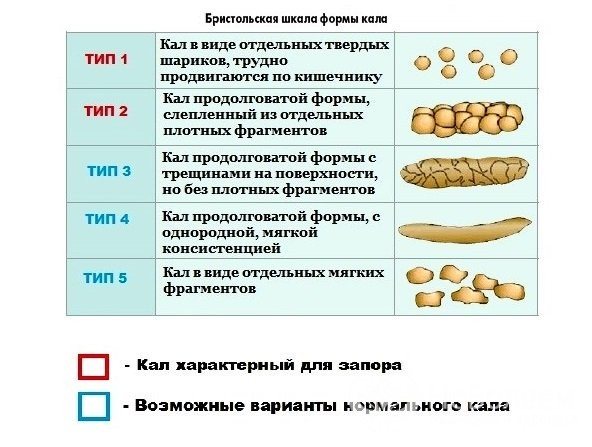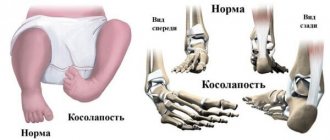Home › Child under one year old › Diseases
Author of the article
Ekaterina Rakitina Doctor Dietrich Bonhoeffer Klinikum, Germany
Reading time: 4 minutes
AA
Article last updated: 02/13/2019
What is the most important thing for a newborn baby? So that he is healthy. This is what any young mother will answer. The baby's lifestyle in the first weeks is not very different from its existence in the womb. He mostly eats and sleeps. It is too early to conduct any special educational games immediately after birth, but children’s health should be taken seriously.
The main problem that happens even with a completely healthy newborn baby is a sore tummy. If a baby often cries, sleeps restlessly or eats poorly, in most cases the reason for this is the functioning of the digestive system. More precisely, some problems with it. The fact is that the muscles on the small tummy have not yet become stronger, and the internal organs have not yet adapted to the new way of life separately from the mother’s womb. And even if the newborn baby is completely healthy, abdominal pain and colic often occur. This does not at all mean that there is a threat of some kind of disease, but it also does not mean that no measures need to be taken. During such attacks, the baby should not be calmed down with caresses, but rather the cause of his anxiety should be identified and eliminated as quickly as possible.
Forms of constipation in children
Constipation in children can be true or false (pseudoconstipation).
Depending on the etiological factor:
- nutritional;
- functional dyskinetic (spastic and hypotonic);
- organic;
- conditioned reflex;
- intoxication;
- endocrine;
- Iatrogenic.
Depending on the characteristics of the clinical picture, acute and chronic constipation in children are distinguished.

Source: bolit.info
Causes of constipation in children and risk factors
Common causes of constipation in children of the first years of life include feeding errors, as well as disturbances in the absorption of nutrients.
The child may receive less breast milk than required in case of hypogalactia in the mother, as well as with sluggish sucking, regurgitation, clefts of the hard palate and upper lip. In cases of malnutrition, the volume of stool in the child is correspondingly insufficient to cause the urge to defecate. Such cases of delayed bowel movements are referred to as pseudoconstipation.
Constipation in breastfed children is caused by a lack of fiber-rich foods in the mother's diet. At the same time, excessive consumption of fatty foods leads to even greater hardening of the child’s stool and aggravates constipation.
For constipation in formula-fed children, it is recommended to use formulas containing lactulose or dietary fiber.
A temporary delay in defecation (transient constipation) is observed in children during periods of acute febrile state due to dehydration against the background of increased body temperature, increased sweating, and vomiting.
Alimentary constipation in children occurs due to nutritional disorders, which include poor nutrition, insufficient drinking regimen, lack of vitamins in the body, dysfunction of the digestive glands, and early transfer of the child to artificial feeding.
Constipation in a child can be a manifestation of diseases not directly related to pathological processes in the gastrointestinal tract. Such diseases include hypothyroidism, rickets and other metabolic diseases. However, in most patients, constipation is still caused by disorders of the digestive tract.
The organic form of constipation in children develops with ectopia of the anus, Hirschsprung's disease, rectal atresia, dolichosigma, intestinal neoplasms, scars of the anorectal region, adhesions, and helminthic infestations.
In most patients in this age group, constipation is functional in nature. Dyskinetic constipation in children is caused by traumatic or hypoxic-ischemic lesions of the central nervous system. The conditioned reflex form of constipation in children occurs during painful defecation (with anal fissures, rectal fistulas, paraproctitis, diaper dermatitis). Hypotonic constipation in children develops against the background of insufficient physical activity, prolonged bed rest, chronic gastroduodenitis, peptic ulcer, and rickets. Spastic constipation can occur in children with neuro-arthritic diathesis, cerebral palsy, and lactase deficiency.
When treating constipation in children, first of all, it is necessary to eliminate the causative factor. In some cases, normalizing the child’s nutrition, including increasing the amount of fluid consumed, is sufficient.
Other causes of constipation in children include intestinal dysbiosis, diabetes mellitus, gigantism, pheochromocytoma, and adrenal insufficiency.
Risk factors include:
- hereditary predisposition;
- uncontrolled use of a number of medications (enzymes, diuretics, enterosorbents, antibacterial agents, antispasmodics, iron supplements);
- abuse of enemas;
- food allergies;
- muscle hypotension;
- unbalanced diet;
- body weight deficiency;
- sudden change in climatic conditions;
- improper potty training of a child;
- psychological problems;
- long-term (up to 3-4 years of age) wearing diapers.

Source: sitemedical.ru
Signs of constipation
Not every delay in bowel movements is considered constipation. Normally, a breastfed baby can have bowel movements 1-10 times a day. And even within this wide range there are exceptions. When mother's milk is completely absorbed in a child over 3 months old, there may be no stool for several days. Signs of constipation are:
- Stools have a hard consistency (like “goat balls”).
- Difficulty in defecation, during which the child becomes very tense, his face turns red, and his legs become tense.
- Lack of stool during the day.
- Poor appetite, frequent awakenings - can occur when it is impossible to have a bowel movement, but feces cause discomfort to the child.
On average, the normal number of bowel movements a child may have is:
At 1-2 months - from 2 times a day until emptying after each feeding.
At 2-6 months - the frequency is reduced to 2 times a day, but sometimes emptying can occur once every 2-3 days.
Over six months - the frequency of stool is affected by the introduced complementary foods. At the same time, the general rule remains the same: it is advisable that the intestines be cleansed at least once a day.
Symptoms
Clinical manifestations of constipation in children include local (intestinal) and general (extraintestinal) symptoms. Local symptoms include: a rare rhythm or prolonged absence of bowel movements, changes in the consistency of stool, pain in the abdomen, bloating, a feeling of incomplete bowel movement after defecation, blood in the stool, pain during defecation, flatulence, a feeling of pressure in the anus.
In children up to six months, the consistency of stool is normally mushy; from six months to one and a half to two years, stool has a mushy or formed consistency, later - formed.

Overstretching of the intestinal wall with dense feces, which can also injure the mucous membrane of the anal canal, causes pain and anxiety for the child during bowel movements. Children with constipation often experience encopresis (stooling), usually after a long delay in defecation.
Persistent constipation in children can lead to rectal prolapse.
Extraintestinal manifestations of constipation in children include general weakness, fatigue, irritability, headaches, pale skin, anorexia, anemia, a tendency to develop pustular rashes on the skin, and decreased appetite.
With chronic constipation in children, an increase in the volume of feces occurs. This form of pathology is characterized by a persistent long-term (3 months or longer) decrease in bowel movements, which is accompanied by difficulty in bowel movements and increased density of feces.
Diagnostics
To diagnose constipation in children, you may need to consult not only a pediatrician, but also a pediatric gastroenterologist or proctologist. When collecting complaints and anamnesis, the time of onset and dynamics of the pathological process, the frequency of bowel movements and the consistency of stool are specified. During an objective examination, the color of the skin, the condition of the tongue, tissue turgor, bloating and tenderness of the abdomen are determined; upon palpation, the presence of fecal stones along the sigmoid colon can be determined. During a digital rectal examination, the condition of the ampulla and sphincter is assessed, and organic malformations can be detected.
Laboratory diagnostic methods usually include a general and biochemical blood test, a coprogram, and a stool test for helminth eggs and dysbacteriosis.
In order to exclude somatic pathology, ultrasound examination of the liver, pancreas, stomach, large intestine, esophagogastroduodenoscopy, plain radiography of the abdominal cavity, irrigography, enterocolonoscintigraphy may be required. To examine the mucous membranes of different parts of the intestine, they resort to sigmoidoscopy and colonoscopy.
Constipation is reported in 15–30% of children, with preschool children being more susceptible to it.
In some cases, consultation with a pediatric neurologist with electroencephalography and echoencephalography is required.
Treatment of constipation in children
When treating constipation in children, first of all, it is necessary to eliminate the causative factor. In some cases, normalizing the child’s nutrition, including increasing the amount of fluid consumed, is sufficient. Of no small importance for constipation in children is the development of a conditioned reflex to defecation.
Drug treatment of constipation in children is carried out if necessary and consists of prescribing laxatives, antispasmodics, and prokinetics. In some cases, short courses of cleansing, hypertensive or oil enemas are indicated.
The most convenient and safe option for solving the problem of constipation in children is local action - rectal glycerin suppositories Glycelax®. The active ingredient of Glycelax® suppositories is glycerin. It has a double effect: it softens stool and stimulates intestinal motility, thereby speeding up bowel movements. As a result, the intestines are emptied without pain or discomfort. Glycelax® suppositories do not require division: the dosage and size are designed for children, the use of suppositories is possible from three months.

Glycelax
In some cases, physical therapy is effective. Electrophoresis, pulsed currents, galvanization (for hypotension) and paraffin baths (for hypertonicity) can be used. For functional constipation in children, physical therapy provides a good therapeutic effect. Massage for constipation in a child is used in case of intestinal hypotension after each meal. In the absence of contraindications, herbal medicine (fennel tea, dill water) can be used.
If there are signs of perinatal damage to the central nervous system, treatment is carried out with the participation of a pediatric neurologist. In this case, neurometabolic stimulants, B vitamins, and drugs to improve cerebral circulation are prescribed. If conditioned reflex constipation develops in children, consultation with a child psychologist may be necessary.
Observation and supportive care are usually carried out for 6–24 months.
Regular constipation in children negatively affects the growth and development of the child, can lead to intoxication, hypovitaminosis, the development of other complications, and worsen the quality of life.
Preventing constipation in newborns
To eliminate systematic constipation in a child, it is necessary to carry out preventive measures and comprehensive treatment. Preventive methods include:
- proper nutrition of mother and baby;
- frequent walks in the fresh air;
- in case of frequent recurrence of constipation, use special milk formulas for additional feeding;
- massage and exercises for the baby;
- stabilizing the stool and carrying it out at a certain time.
Every mother is happy when her baby is healthy. It is a pity to look at a nursing mother who cannot understand the reason why her child is crying so much. What did she do wrong? How can I help him, how and how to treat him? The answer to her questions is simple: a healthy lifestyle and healthy eating will help save her baby from suffering.
Diet for constipation in children
When constipation develops in a breastfed child, first of all, it is necessary to analyze and adjust the feeding pattern of the nursing mother. It is recommended to limit the consumption of foods that contribute to increased gas formation (brown bread, onions, tomatoes, cabbage, rice, legumes, mushrooms, grapes, pears, spicy, smoked foods, spices).
For constipation in formula-fed children, it is recommended to use formulas containing lactulose or dietary fiber. Young children need up to 5 g of dietary fiber per day (excessive dietary fiber in the diet can cause disruption of their digestion and poor absorption of calcium, zinc, and iron).
For constipation in children, it is recommended to include sour cream, cream, milk, yogurt, kefir, cottage cheese, mild cheese, soft-boiled eggs or steam omelettes, juices, dried fruit compotes, berries, fruits, beets, carrots, zucchini, wheat bran, porridge in their diet on milk and water. Acceptable sweets are honey, marmalade, marshmallows, and marshmallows. Turnips, radishes, radishes, mushrooms, green peas, strong broths, strong tea, baked goods, and industrially produced confectionery products are excluded from the diet. Limit the consumption of pasta and semolina. It is recommended to boil, steam, and bake products.
When constipation develops in children due to celiac disease, patients are advised to follow the agliadine diet. Exclude from the diet rye, barley, wheat, oat flour, flakes and porridges made from them, semolina, starch, pasta and confectionery, boiled sausages, canned fish and meat, as well as products to which there is an individual intolerance or hypersensitivity. Buckwheat, rice, corn, vegetables, fruits, berries, eggs, meat, and vegetable oil are acceptable in the diet.
To diagnose constipation in children, you may need to consult not only a pediatrician, but also a pediatric gastroenterologist or proctologist.
For constipation in children due to cystic fibrosis, it is recommended to increase the calorie content of the diet by 50–90%. The diet should include meat, poultry, fish, cottage cheese, eggs, milk and dairy products, honey, and fruits. The consumption of whole grain cereals, legumes, and bran is limited.
For constipation due to lactose intolerance, milk and dairy products are excluded from the diet. For mild forms of hypolactasia, it is permissible to include butter, hard cheese, yogurt, and kefir in the diet.
Foods that a nursing mother should avoid during lactation
There are a number of foods that a mother is strictly forbidden to eat if she is breastfeeding. Such food can cause not only constipation, but also allergies, colic, poor health and many other undesirable consequences.
Prohibited foods during lactation include:
- Any drinks containing alcohol. This includes beer.
- Products including chocolate and cocoa.
- Mushrooms.
- Citrus fruits (you can drink tea with lemon).
- Honey.
- Fruits, berries, vegetables that are red or scarlet in color.
- Fruits that are classified as exotic. For example, pineapple, coconut, kiwi, etc.
- Seafood and any red fish.
- Nut fruits (except walnuts).
- Cheeses containing enzymes (Adyghe, feta cheese, etc.).
You should also exclude products that have a viscous property. These include: rice, radishes, turnips. The use of spices is not allowed, because they can become a clear cause of constipation in infants. In addition, a nursing mother does not need to try pickled, canned and overly salty foods. This diet will help your baby avoid constipation.
Foods whose consumption should be limited during lactation
There are products that have many beneficial properties for babies. But if their use is excessive, they can affect constipation in the child. Therefore, a nursing mother should eat such food in doses. These include:
- Cow's milk - its consumption should not exceed 200 grams per day;
- Bakery and flour products, including semolina porridge;
- Legumes;
- Candies and sweets should be limited to 50 grams per day (the consumption of marshmallows and marshmallows may not be limited);
- Salt;
- Chicken eggs – 2-3 eggs per week.











